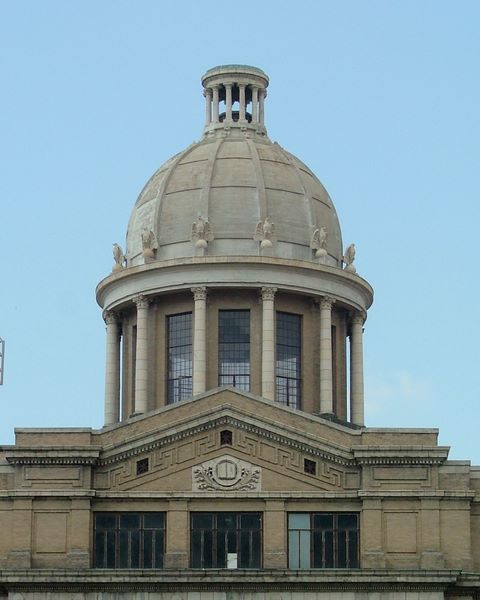
Harris County Courthouse of 1910 - Houston, Texas
Posted by:  JimmyEv
JimmyEv
N 29° 45.677 W 095° 21.598
15R E 271810 N 3294667
A traditional domed, classical revival courthouse, designed by Dallas architects Lang & Witchell, sitting on a traditional tree-shaded courthouse square.
Waymark Code: WMREY
Location: Texas, United States
Date Posted: 09/26/2006
Views: 78
The Allen Brothers, founders of Houston, designated this block, two blocks east of Market Square, for a county courthouse when they platted Houston in 1836. The following year the Republic of Texas moved the Harris county seat from Harrisburg to Houston. The first session of the Eleventh District Court of the Republic of Texas was held under the trees of courthouse square in March, 1837. During the Civil War, the courthouse building was converted into a cartridge factory, and the basement became a guard house for Union prisoners of war.
A design competition for the current building, the fifth Harris County Courthouse to sit on this square, was held in 1909. Fifteen designs were submitted. The competition specified that the courthouse was to have a large dome and columnated facades. The winner of the competition was a Dallas firm, Lang & Witchell. The firm used classical revival styling, with the prerequisite dome and Corinthian columns on each side of the courthouse. The building consists of a two-story base sheathed in pink Texas granite topped with a short, three-story shaft and one-story attic covered in St. Louis brick. The dome, ringed by stone American eagles, is capped with a prominent cupola.
In 1952, the building was remodeled for use as the Harris County Civil Courts. The renovation substantially altered the interiors of the building, seriously comprising the interior’s architectural and historical integrity. It is currently being restored to its original condition for use by a Texas District Court.

Main Street/Market Square Historic District
Next:
Paul Building
| Previous:
Sam Houston Hotel
Source:
Texas Historical Commission, "Harris County Courthouse of 1910," available at Texas Historical Atlas